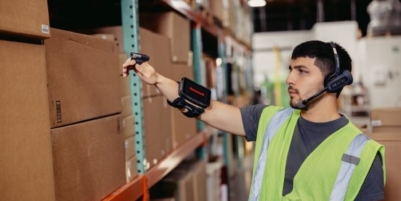-
Women Leading the Way in the UK Material Handling Industry - 5 hours ago
-
LiftEx 2025 live from Liverpool - 1 day ago
-
DATA ANALYSIS – THE FOUNDATION OF EVERY PEAK SEASON - December 5, 2025
-
Creative education specialists Creative Hut give 3PL full marks for onboarding excellence - December 5, 2025
-
Unlimited Industries raises $12M to build the AI construction company that will power America’s future - December 4, 2025
-
Scottish Leather Group gets full-support solution from Rushlift - December 4, 2025
-
Etaily lands strategic investment from Japan’s SMBC – bringing total funding to $24M for Social Commerce enablement platform - December 4, 2025
-
Winners lift their LEEA Awards and raise the industry - December 4, 2025
-
Prism eLogistics and Brand Angels Partnership Gives Brands the Full Package - December 3, 2025
-
New data shows Tesla in danger of losing its way as European consideration to buy Chinese cars jumps 16% in 12 months - December 3, 2025
Running a warehouse is no easy feat. With a need for accurate planning, logistics, great communication and outstanding organisation, warehouse management teams are constantly on the lookout for ways to improve and optimise their processes.
If you run a warehouse, it’s a good idea to take stock every once in a while and see if there are any areas you can focus on and make it more efficient.
We’ll explore some key aspects of warehouse management and ways in which you can optimise your processes.
Safety guidelines
It might sound obvious but ensuring you have adequate health and safety protocols in place is essential for the effective running of a warehouse. Slips, trips and falls are commonplace in warehouse environments so it’s crucial that you properly assess all risks and provide employees with the right tools and information to help prevent accidents.
This might include providing the correct PPE such as footwear, gloves and hats, ensuring staff adhere to the correct processes and making health and safety training a priority. You should also have a proper procedure in place in the event of an accident.
Supply chains
You should aim to optimise the receiving and shipping processes to create a highly efficient supply chain. Issues in this area can quickly lead to storage problems and a decrease in production. By reducing human errors through the use of technology, inventory count and control is likely to remain more accurate and supply chains more manageable.
Storage and space
An efficient warehouse will have tools and processes in place to ensure control over product storage and space. Before growing your customer reach, consider the space you have and the best way to utilise your storage solutions.
Warehouse robotics
Artificial intelligence can help improve warehouse functionality but it’s important to invest in the right areas. Consider where it’s possible to increase productivity, such as through repetitive tasks, without compromising on quality.
Rather than rendering staff redundant, utilising this type of technology should allow employees to focus on other areas that require a higher level of human input.
Consider employee workload
To minimise fatigue, you should consider the labour requirements and ensure tasks are well suited to the employee. As well as being a health and safety risk, fatigue can create errors and slow production.
It’s also vital to consider headcount before growing your warehouse business or taking on new clients and large orders. A well-managed business will look to retain staff to maintain high quality and low recruitment costs.
Although there are often costs involved when implementing new processes or technology, it’s usually considered a worthwhile investment if it means your warehouse business can grow and become more efficient.























